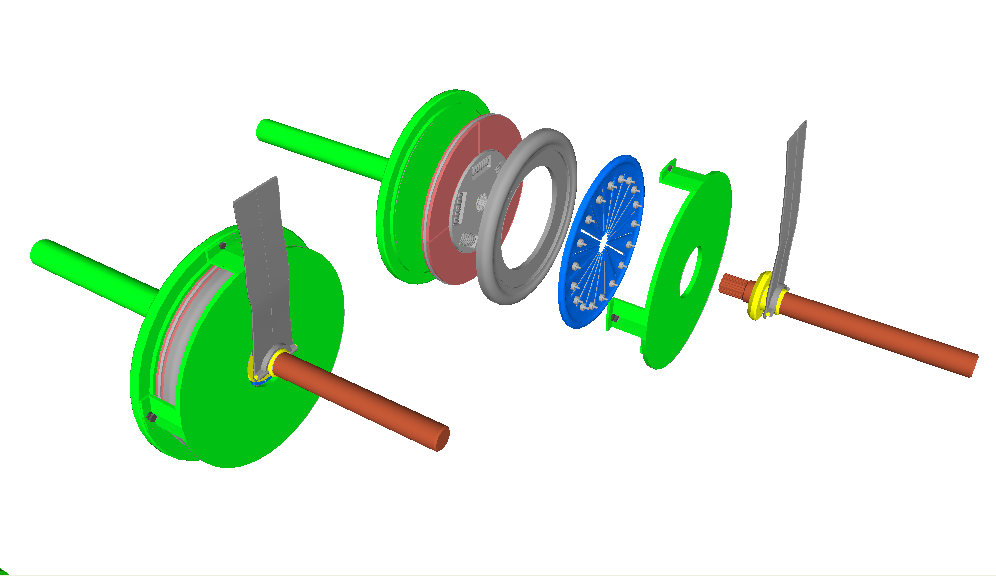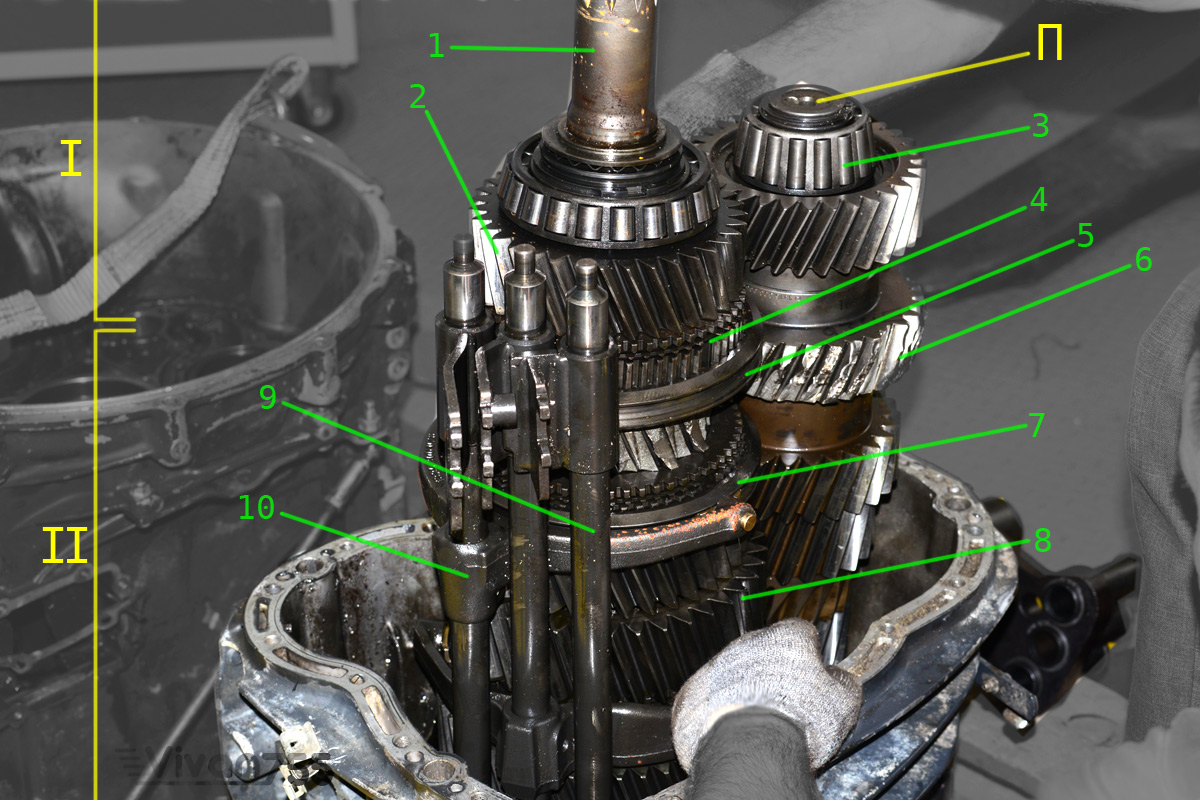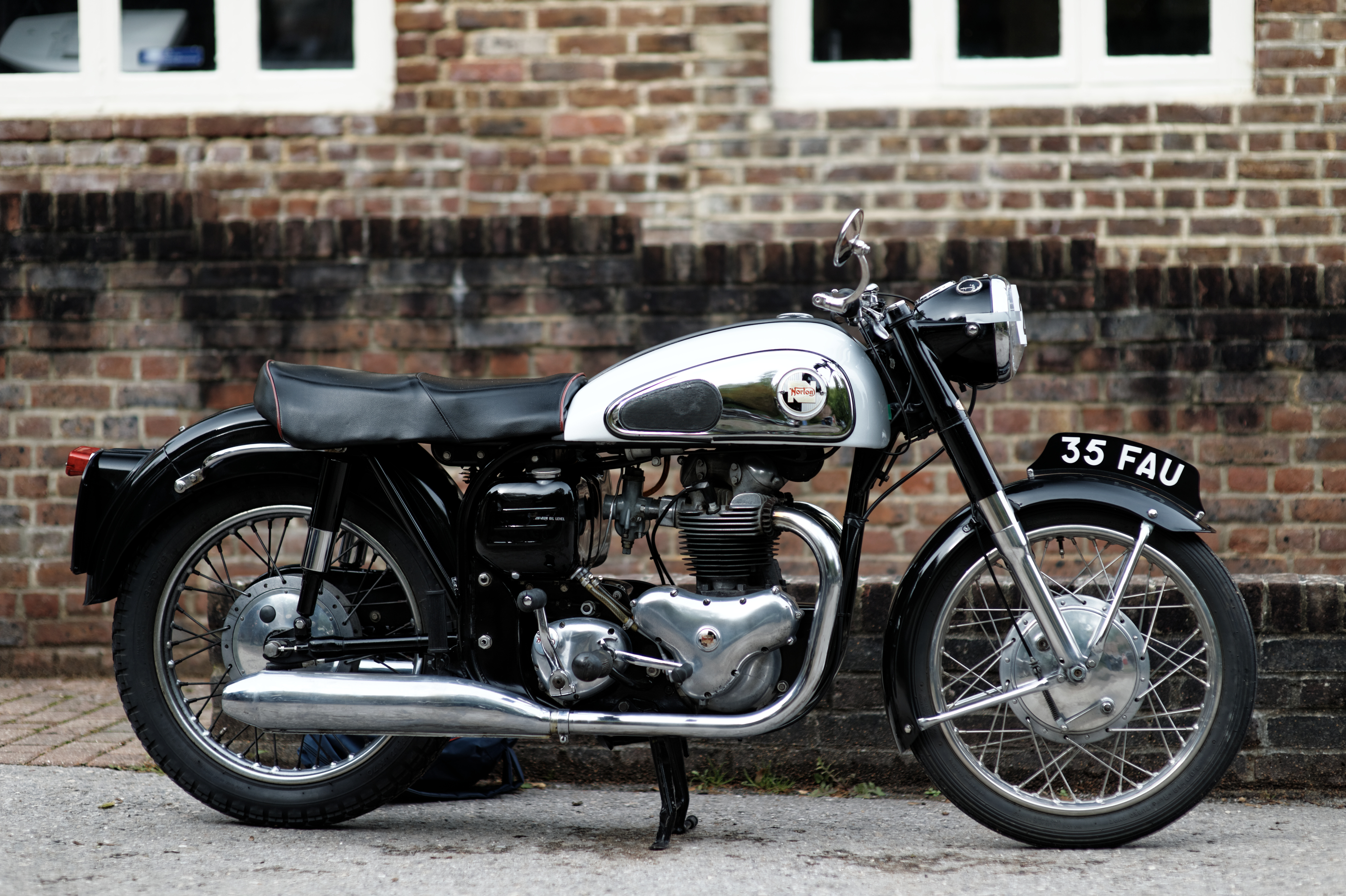|
Float Shifting
Float shifting or floating gears, also called "slip shifting", "dead sticking", or "bang shifting", is the process of changing gears, in typically a non-synchronous transmission, without depressing the clutch. Shifting in this manner is also used with synchronous manual transmissions, particularly after a clutch failure, to prevent destroying the synchromeshes with the power of the engine. Drivers can shift non-synchronous transmissions without using the clutch by bringing the engine to exactly the right RPM in neutral before attempting to complete a shift. If done improperly, it can damage or destroy a transmission. Some truck drivers use this technique with the higher gears. The technique is sometimes also used on motorcycles, but has largely been replaced by quickshifters for competitive use. Technique After bringing the engine up to speed in a gear, the driver senses the need to upshift. To get out of the current gear without using the clutch, the driver backs off slightly on ... [...More Info...] [...Related Items...] OR: [Wikipedia] [Google] [Baidu] |
Non-synchronous Transmission
A non-synchronous transmission, also called a crash gearbox, is a form of manual transmission based on gears that do not use synchronizing mechanisms. They require the driver to manually synchronize the transmission's input speed (engine RPM) and output speed (driveshaft speed). Non-synchronous transmissions are found primarily in various types of industrial machinery; such as tractors and semi-tractors. Non-synchronous manual transmissions are also found on motorcycles, in the form of constant-mesh sequential manual transmissions. Prior to the 1950s and 1960s, most cars used constant-mesh (and also sliding-mesh) but non-synchronous transmissions. History Most early automobiles were rear-engined, using a single-speed transmission and belt-drive to power the rear wheels. In 1891, the French Panhard et Levassor automobile used a three-speed manual transmission and is considered to have set the template for multi-speed manual transmissions in motor vehicles. This transmis ... [...More Info...] [...Related Items...] OR: [Wikipedia] [Google] [Baidu] |
Clutch
A clutch is a mechanical device that allows an output shaft to be disconnected from a rotating input shaft. The clutch's input shaft is typically attached to a motor, while the clutch's output shaft is connected to the mechanism that does the work. In a motor vehicle, the clutch acts as a mechanical linkage between the engine and transmission. By disengaging the clutch, the engine speed (RPM) is no longer determined by the speed of the driven wheels. Another example of clutch usage is in electric drills. The clutch's input shaft is driven by a motor and the output shaft is connected to the drill bit (via several intermediate components). The clutch allows the drill bit to either spin at the same speed as the motor (clutch engaged), spin at a lower speed than the motor (clutch slipping) or remain stationary while the motor is spinning (clutch disengaged). Types Dry clutch A ''dry clutch'' uses dry friction to transfer power from the input shaft to the output shaft, f ... [...More Info...] [...Related Items...] OR: [Wikipedia] [Google] [Baidu] |
Manual Transmission
A manual transmission (MT), also known as manual gearbox, standard transmission (in Canadian English, Canada, British English, the United Kingdom and American English, the United States), or stick shift (in the United States), is a multi-speed motor vehicle Transmission (mechanical device), transmission system where gear changes require the driver to manually select the gears by operating a gear stick and clutch (which is usually a foot pedal for cars or a hand lever for motorcycles). Early automobiles used ''sliding-mesh'' manual transmissions with up to three forward gear ratios. Since the 1950s, ''constant-mesh'' manual transmissions have become increasingly commonplace, and the number of forward ratios has increased to 5-speed and 6-speed manual transmissions for current vehicles. The alternative to a manual transmission is an automatic transmission. Common types of automatic transmissions are the Automatic transmission#Hydraulic automatic transmissions, hydraulic automatic ... [...More Info...] [...Related Items...] OR: [Wikipedia] [Google] [Baidu] |
Synchromesh
A manual transmission (MT), also known as manual gearbox, standard transmission (in Canada, the United Kingdom and the United States), or stick shift (in the United States), is a multi-speed motor vehicle transmission system where gear changes require the driver to manually select the gears by operating a gear stick and clutch (which is usually a foot pedal for cars or a hand lever for motorcycles). Early automobiles used ''sliding-mesh'' manual transmissions with up to three forward gear ratios. Since the 1950s, ''constant-mesh'' manual transmissions have become increasingly commonplace, and the number of forward ratios has increased to 5-speed and 6-speed manual transmissions for current vehicles. The alternative to a manual transmission is an automatic transmission. Common types of automatic transmissions are the hydraulic automatic transmission (AT) and the continuously variable transmission (CVT). The automated manual transmission (AMT) and dual-clutch transmission (DCT ... [...More Info...] [...Related Items...] OR: [Wikipedia] [Google] [Baidu] |
Truck Driver
A truck driver (commonly referred to as a trucker, teamster or driver in the United States and Canada; a truckie in Australia and New Zealand; an HGV driver in the United Kingdom, Ireland and the European Union, a lorry driver, or driver in the United Kingdom, Ireland, India, Nepal, Pakistan, Malaysia and Singapore) is a person who earns a living as the driver of a truck, which is commonly defined as a large goods vehicle (LGV) or heavy goods vehicle (HGV) (usually a semi truck, box truck, or dump truck). Duties and functions Truck drivers provide an essential service to industrialized societies by transporting finished Good (economics), goods and raw materials over land, typically to and from Factory, manufacturing plants, retail, and distribution (business), distribution centers. Truck drivers are responsible for inspecting their vehicles for mechanical items or issues relating to safe operation. Others, such as driver/sales workers, are also responsible for sales, complet ... [...More Info...] [...Related Items...] OR: [Wikipedia] [Google] [Baidu] |
Motorcycle
A motorcycle (motorbike, bike; uni (if one-wheeled); trike (if three-wheeled); quad (if four-wheeled)) is a lightweight private 1-to-2 passenger personal motor vehicle Steering, steered by a Motorcycle handlebar, handlebar from a saddle-style seat. Motorcycle designs vary greatly to suit a range of different purposes: Long-distance motorcycle riding, long-distance travel, Motorcycle commuting, commuting, cruising (driving), cruising, Motorcycle sport, sport (including Motorcycle racing, racing), and Off-roading, off-road riding. Motorcycling is riding a motorcycle and being involved in other related social activities such as joining a motorcycle club and attending motorcycle rally, motorcycle rallies. The 1885 Daimler Reitwagen made by Gottlieb Daimler and Wilhelm Maybach in Germany was the first internal combustion, petroleum-fueled motorcycle. In 1894, Hildebrand & Wolfmüller became the first series production motorcycle. Globally, motorcycles are comparable numerically t ... [...More Info...] [...Related Items...] OR: [Wikipedia] [Google] [Baidu] |
Quickshifter
A quickshifter or quick shifter is a device that eliminates the need to use the clutch or throttle when shifting gears on a manual transmission. This can increase the safety and comfort of the vehicle and allow for faster gear shifting (usually shifting in less than 50 milliseconds) and is thus a popular performance enhancement for motorcycles. Working mechanism Almost all quickshifters for upshifts on motorcycles work on the same basis: a microcontroller detects the gear shift action via a sensor, calculates the shift timing, and momentarily cuts off the ignition, resulting in a reduction of the load at the transmission allowing the engine speed to match the transmission speed of the next gear and permit the gear to slip (and engage) into place. However, the method of sensing and reducing the load can vary. Sensor types Typically, the sensor is mounted in a way that it is a functional part of the gear shift linkage. The shift action by the rider, results in an actuation forc ... [...More Info...] [...Related Items...] OR: [Wikipedia] [Google] [Baidu] |
Car Controls
Car controls are the components in automobiles and other powered road vehicles, such as trucks and buses, used for driving and parking. While controls like steering wheels and pedals have existed since the invention of cars, other controls have developed and adapted to the demands of drivers. For example, manual transmissions became less common as technology relating to automatic transmissions became advanced. Earlier versions of headlights and signal lights were fueled by acetylene or oil. Acetylene was preferred to oil, because its flame is resistant to both wind and rain. Acetylene headlights, which gave a strong green-tinted light, were popular until after World War I; even though the first electric headlights were introduced in 1898 (and those were battery-powered), it wasn't until high-wattage bulbs and more powerful car electrical generating systems were developed in the late 1910s that electric lighting systems entirely superseded acetylene. Steering The first autom ... [...More Info...] [...Related Items...] OR: [Wikipedia] [Google] [Baidu] |
Gear Stick
A gear stick (rarely spelled ''gearstick''), gear lever (both UK English), gearshift or shifter (both U.S. English), more formally known as a transmission lever, is a metal lever attached to the transmission of an automobile. The term ''gear stick'' mostly refers to the shift lever of a manual transmission, while in an automatic transmission, a similar lever is known as a gear selector. A gear stick will normally be used to change gear whilst depressing the clutch pedal with the left foot to disengage the engine from the drivetrain and wheels. Automatic transmission vehicles, including hydraulic (torque converter) automatic transmissions, automated manual and older semi-automatic transmissions (specifically clutchless manuals), like '' VW Autostick'', and those with continuously variable transmissions, do not require a physical clutch pedal. Alternative positions Gear sticks are most commonly found between the front seats of the vehicle, either on the center console (some ... [...More Info...] [...Related Items...] OR: [Wikipedia] [Google] [Baidu] |
Revolutions Per Minute
Revolutions per minute (abbreviated rpm, RPM, rev/min, r/min, or r⋅min−1) is a unit of rotational speed (or rotational frequency) for rotating machines. One revolution per minute is equivalent to hertz. Standards ISO 80000-3:2019 defines a physical quantity called ''rotation'' (or ''number of revolutions''), dimensionless, whose instantaneous rate of change is called ''rotational frequency'' (or ''rate of rotation''), with units of reciprocal seconds (s−1). A related but distinct quantity for describing rotation is ''angular frequency'' (or ''angular speed'', the magnitude of angular velocity), for which the SI unit is the radian per second (rad/s). Although they have the same dimensions (reciprocal time) and base unit (s−1), the hertz (Hz) and radians per second (rad/s) are special names used to express two different but proportional ISQ quantities: frequency and angular frequency, respectively. The conversions between a frequency and an angular frequency ... [...More Info...] [...Related Items...] OR: [Wikipedia] [Google] [Baidu] |







